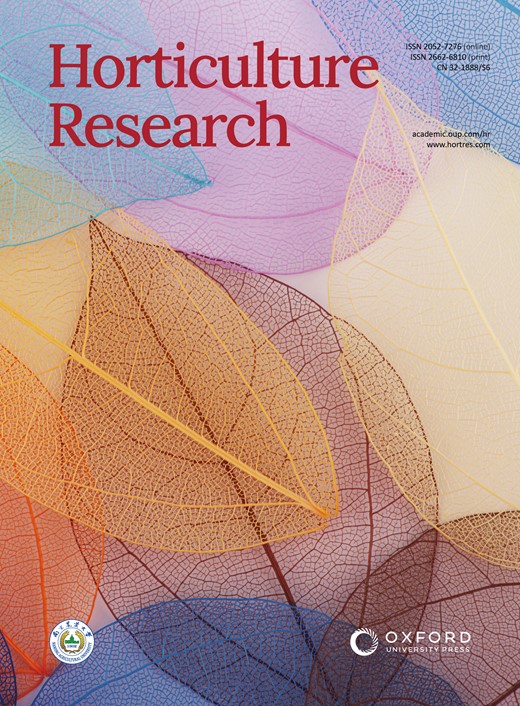Origin and evolution of signaling pathways responsible for ascorbic acid synthesis and catabolism during plant terrestrialization
IF 8.7
1区 农林科学
Q1 Agricultural and Biological Sciences
引用次数: 0
Abstract
This study comprehensively reveals the origin and evolution mechanisms of ascorbic acid (AsA) synthesis and breakdown pathways during plants' transition from water to land. By analyzing genomic data from 21 key plant species and transcriptomic data from the One thousand plants transcription project, we found that the L-galactose pathway emerged in green algae, with variations in the HIT domain of the rate-limiting enzyme GGP driving adaptive divergence between lower and higher plants. The galacturonic acid pathway integrated with the L-galactose pathway through the emergence of GalUR in bryophytes. The myo-inositol pathway became complete in bryophytes, and its refinement likely promoted dehydration adaptation via oxidative protection. The AsA recycling pathway (APX/MDHAR/DHAR) originated in red algae, while the appearance of AO enzymes is significantly related to rising oxygen levels during land colonization. Statistical analysis of 218 plant species shows that AsA content increases significantly with evolution, in line with heightened light and oxygen stress. This study explains the dynamic evolution of the AsA metabolic network during plant terrestrialization, highlighting how key gene families (e.g., GGP, GalUR, GLOase) undergo functional and structural domain divergence to boost antioxidant capacity and thus facilitate adaptation to terrestrial life. These findings offer a theoretical basis for improving crop stress resistance.植物陆地化过程中抗坏血酸合成和分解代谢信号通路的起源和进化
本研究全面揭示了植物从水向陆转化过程中抗坏血酸(AsA)合成和分解途径的起源和进化机制。通过分析21个关键植物物种的基因组数据和千株植物转录项目的转录组学数据,我们发现绿藻中出现了l -半乳糖途径,限速酶GGP的HIT结构域的变化驱动了低等植物和高等植物之间的适应性差异。在苔藓植物中,半乳糖醛酸途径通过GalUR的出现与l -半乳糖途径整合。肌醇途径在苔藓植物中变得完整,其细化可能通过氧化保护促进脱水适应。AsA循环途径(APX/MDHAR/DHAR)起源于红藻,而AO酶的出现与陆地定殖过程中氧水平升高有显著关系。对218种植物的统计分析表明,AsA含量随着进化而显著增加,与光和氧胁迫的加剧一致。本研究解释了植物陆地化过程中AsA代谢网络的动态进化,重点介绍了关键基因家族(如GGP、GalUR、GLOase)如何通过功能和结构域分化来提高抗氧化能力,从而促进适应陆地生活。这些发现为提高作物抗逆性提供了理论依据。
本文章由计算机程序翻译,如有差异,请以英文原文为准。
求助全文
约1分钟内获得全文
求助全文
来源期刊

Horticulture Research
Biochemistry, Genetics and Molecular Biology-Biochemistry
CiteScore
11.20
自引率
6.90%
发文量
367
审稿时长
20 weeks
期刊介绍:
Horticulture Research, an open access journal affiliated with Nanjing Agricultural University, has achieved the prestigious ranking of number one in the Horticulture category of the Journal Citation Reports ™ from Clarivate, 2022. As a leading publication in the field, the journal is dedicated to disseminating original research articles, comprehensive reviews, insightful perspectives, thought-provoking comments, and valuable correspondence articles and letters to the editor. Its scope encompasses all vital aspects of horticultural plants and disciplines, such as biotechnology, breeding, cellular and molecular biology, evolution, genetics, inter-species interactions, physiology, and the origination and domestication of crops.
 求助内容:
求助内容: 应助结果提醒方式:
应助结果提醒方式:


